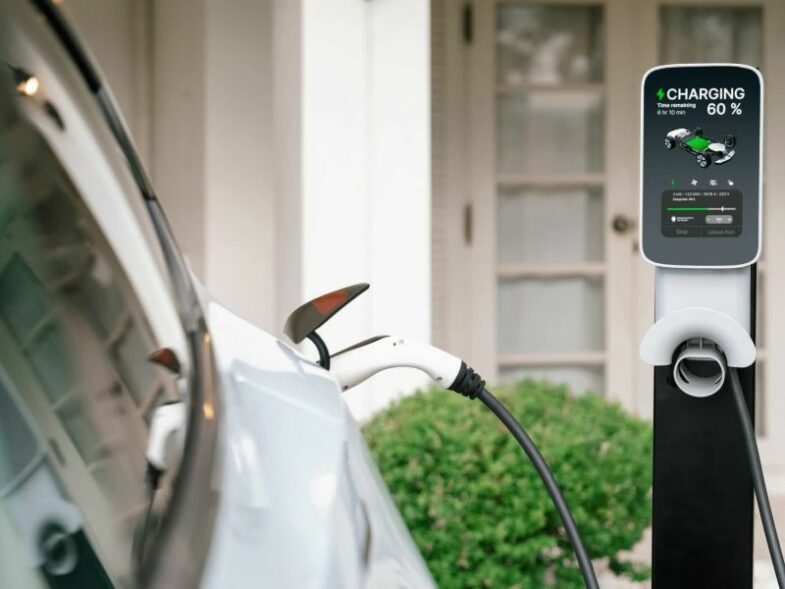As electric vehicles (EVs) move from niche to mainstream, the need for faster, more efficient charging has become a defining challenge for the industry. Consumers expect refueling to be as quick and seamless as gas-powered alternatives, yet current charging speeds often fall short of expectations. While Level 2 chargers remain a staple for home use, advancements in ultra-fast DC charging technology are reshaping the public infrastructure landscape.
Automakers and technology firms alike are investing heavily in reducing charging times, pushing boundaries with 350 kW chargers capable of delivering an 80% charge in under 20 minutes. The introduction of high-voltage architectures, such as 800V systems, further accelerates charging efficiency, enabling new-generation EVs to replenish their batteries in mere minutes. Yet, the challenge extends beyond raw speed; optimizing energy transfer, managing heat dissipation, and ensuring grid stability all factor into making rapid charging a sustainable reality.
Governments and private enterprises are working in tandem to support this evolution. The U.S. Department of Energy has prioritized funding for high-speed charging corridors, while European initiatives aim for ubiquitous ultra-fast chargers along major highways. At the heart of this movement is not just innovation but also standardization—harmonizing charging interfaces across manufacturers ensures seamless user experiences and widespread adoption.
The Role of Battery Advancements in Charging Speed
Battery technology dictates how quickly an EV can accept a charge, making it a key factor in the race for speed. Traditional lithium-ion cells, while effective, face limitations in thermal management and charge acceptance rates. To mitigate these issues, researchers are exploring alternative chemistries such as lithium iron phosphate (LFP) and solid-state batteries, both of which promise faster charging with enhanced longevity.
Solid-state batteries, in particular, have captured industry attention for their ability to withstand higher voltages and deliver superior energy density. Toyota, for instance, is working on a solid-state solution that could cut charging times by 60% while extending driving range significantly. Meanwhile, companies like QuantumScape are developing prototypes aimed at eliminating the traditional anode, allowing for unprecedented energy transfer efficiency.
Beyond material science, software-driven battery management systems (BMS) are playing a crucial role in optimizing charging speeds. By precisely regulating current flow and predicting battery health in real-time, BMS technologies prevent overcharging and overheating, making ultra-fast charging safer and more reliable for everyday use.
Grid Infrastructure: The Bottleneck of Ultra-Fast Charging
As charging speeds increase, so too does the strain on local and national power grids. Unlike gas stations, which require minimal infrastructure upgrades, ultra-fast EV chargers demand high-voltage grid connections and substantial energy reserves. Many utilities are now grappling with the challenge of delivering sufficient power without destabilizing local energy supply.
One solution lies in distributed energy storage, where high-capacity batteries act as intermediaries between the grid and EV chargers. By storing electricity during off-peak hours and releasing it when demand surges, these buffer systems help mitigate peak load spikes while improving charging station reliability. Companies are also experimenting with vehicle-to-grid (V2G) technology, allowing EVs to temporarily supply power back into the grid when not in use.
Further complicating the landscape is the need for widespread grid modernization. Aging power infrastructure, particularly in rural areas, lacks the capacity to support large-scale fast-charging deployments. Investments in smart grids, high-efficiency transformers, and renewable energy integration will be critical in preventing bottlenecks as charging speeds continue to rise.
The Evolution of Charging Station Design
Beyond technological improvements, the architecture of charging stations is undergoing a significant transformation. Traditional standalone chargers are being replaced by modular designs that enhance efficiency and scalability. ChargeTronix, for instance, has developed an advanced distributed power cabinet system capable of dynamically allocating power across multiple dispensers. Their innovative designs ensure consistent uptime, reduce congestion at high-traffic locations, and optimize energy distribution for maximum efficiency. Additionally, ChargeTronix’s modular approach allows for seamless customization, enabling station operators to integrate features such as payment processing systems and advanced cable management tailored to their specific needs.
Another trend is the emergence of automated and robotic charging solutions. Companies are developing robotic arms capable of plugging into EVs autonomously, reducing human intervention and increasing accessibility for individuals with mobility challenges. Wireless inductive charging is also making strides, with pilot programs demonstrating how vehicles could charge simply by parking over embedded ground coils.
Furthermore, charging stations are becoming multi-functional hubs, integrating convenience stores, lounges, and even co-working spaces. With EV owners spending anywhere from 10 to 30 minutes at a station, the business model is shifting toward creating value-added services that enhance the user experience while boosting profitability for station operators.
Standardization Wars: A Challenge for the Industry
As charging technology advances, the industry faces a persistent challenge: standardization. Unlike traditional fueling, which adheres to universal nozzle designs, EV charging remains fragmented across competing plug types and protocols. Tesla’s Supercharger network operates on a proprietary system, while the Combined Charging System (CCS) and CHAdeMO standards vie for dominance among non-Tesla vehicles.
The recent adoption of Tesla’s North American Charging Standard (NACS) by major automakers such as Ford and GM signals a potential shift toward consolidation. However, legacy networks continue to maintain CCS compatibility, leaving the industry in a transitional phase. Resolving this standardization battle will be crucial in ensuring seamless interoperability across brands and geographies.
Beyond plug types, software standardization is another hurdle. Differing payment systems, app-based authentication, and network subscriptions create friction for users. The push toward plug-and-charge technology, where vehicles automatically authenticate and initiate charging without requiring manual input, represents a step forward in simplifying the experience for all EV drivers.
The Role of AI and Predictive Analytics in Charging
Artificial intelligence is poised to play a transformative role in optimizing EV charging networks. Predictive analytics can anticipate demand surges, dynamically allocate power resources, and minimize wait times at high-traffic locations. By analyzing usage patterns, AI-driven software can also help utilities adjust energy distribution in real time, preventing grid overloads.
Some companies are integrating AI with digital twin technology, creating virtual simulations of charging networks to identify inefficiencies before they manifest in the real world. This approach enables proactive maintenance, reducing downtime and operational costs for charging station operators.
AI is also enhancing user convenience through intelligent route planning. Navigation systems can now factor in real-time charger availability, battery health, and driving behavior to recommend the most efficient charging stops. This shift toward predictive, data-driven decision-making will be key in making the EV charging experience as seamless as possible.
What Lies Ahead for EV Charging?
The next frontier in EV charging is not just about speed but also about accessibility, sustainability, and user experience. While 500 kW chargers and ultra-fast solid-state batteries are on the horizon, their widespread adoption hinges on parallel advancements in infrastructure and grid resiliency. The key challenge will be ensuring that these rapid-charging technologies remain cost-effective and widely deployable.
Sustainability is also taking center stage, with companies exploring ways to integrate renewables into charging networks. Solar-powered charging stations and green hydrogen energy storage solutions are emerging as potential pathways to decarbonize the charging ecosystem. The future of EV charging will be as much about reducing environmental impact as it is about technological progress.
Ultimately, the evolution of charging technology will dictate the pace of EV adoption. As solutions become faster, smarter, and more widespread, the tipping point for mass EV adoption will move closer. The race for faster charging isn’t just about convenience—it’s about shaping the future of transportation itself.









